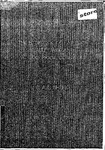THE HYDROLOGY OF A MAJOR VALLEY WETLAND AT GOSS MOOR, CORNWALL
| dc.contributor.author | ISHEMO, CARL ALEXANDER LUGEMALILA | |
| dc.contributor.other | School of Geography, Earth and Environmental Sciences | en_US |
| dc.date.accessioned | 2012-08-07T10:37:17Z | |
| dc.date.available | 2012-08-07T10:37:17Z | |
| dc.date.issued | 1999 | |
| dc.identifier | Not available | en_US |
| dc.identifier.uri | http://hdl.handle.net/10026.1/1123 | |
| dc.description.abstract |
This thesis aims to fiimish an understanding of the water fluxes and storages occurring at the subcatchment scale in Goss Moor, a large lowland wetland in Cornwall, UK. Goss Moor constitutes approximately 5 km^ of poor fen and similar wetland areas sited on clayey alluvial and periglacial deposits in the base of a broad/shallow headwater valley. The bedrock is kaolinised granite and pelite. The hydrological characterisation was achieved using variables measured directly on site, using spectrally derived stream flow components and using flows output from a caUbrated numerical model of transient groundwater flow beneath the wetland. The study demonstrated the use of distributed spectral filtering for source area characterisation and of numerical modelling for investigathig the role of groundwater flow in the wetland. Certain stream flows into and out of the wetland were monitored at an hourly resolution. At each site, slowly- and quickly-varying components of flow were discriminated using a digital filter whose response was based upon an observed summer recession. Quick flows thus defined were found to be conserved during translation from the upsfream inputs to the outflow, although in-channel dispersion eliminated their flashiness. Conversely, the slow flow component was found to vary more rapidly at the wetland outflow than at the main stream entry, indicating the dominance of a different source of flow upon exit from the wetland. Overall stream flow gained by 50% in traversing the wetland site. Evapotranspiration (ET) rates in the wefland and in the outer catchment were estimated using the Penman-Monteith formula with measurements near or within the site. The calculations indicated that evapotranspirative losses would be greater from the wefland than from the remainder of its catchment due to the presence of surface water. U.S.G.S. MODFLOW was used to model the groundwater flow in the alluvium beneath the wefland. Shallow groundwater levels at 20 piezometer sites within the wefland, together with information on stratigraphy, rainfall and ET, provided boundary and caUbration data for the model. The results of in situ slug tests were used to define the aquifer permeability for the model in the transient calibration. Storativity and ET were adjusted to produce a match with the observed summer water table decline. A reduction of ET with falling water table greatly improved the match, and it was postulated that the declining water table had therefore dropped below the zone of greatest evapotranspirative uptake. By combining the various sources of data, the wefland's water budget was estimated. The numerical modeUing showed that groundwater flow to the river accounted for between only 0% and 3% of the total output from the wefland surface and substrata. ET accounted for 20% and surface runoff for 77-80%. Although wefland surface flow was not measured, the water budget showed that a substantial summer reduction in stored water would result if no peripheral inflows were received onto the wetiand surface. In the annual water budget, such peripheral inflows were of a magnitude similar to that of the rainfall input to the wefland. Together, these two inputs traversed the wefland surface to provide the increase in slow flow in the river on its exit from the wetiand. The implications of the water budget for the management of the wetland are briefly discussed. | en_US |
| dc.description.sponsorship | English Nature | en_US |
| dc.language.iso | en | en_US |
| dc.publisher | University of Plymouth | en_US |
| dc.title | THE HYDROLOGY OF A MAJOR VALLEY WETLAND AT GOSS MOOR, CORNWALL | en_US |
| dc.type | Thesis | |
| plymouth.version | Full version | en_US |
| dc.identifier.doi | http://dx.doi.org/10.24382/4938 | |
| dc.identifier.doi | http://dx.doi.org/10.24382/4938 |
Files in this item
This item appears in the following Collection(s)
-
01 Research Theses Main Collection
Research Theses Main


